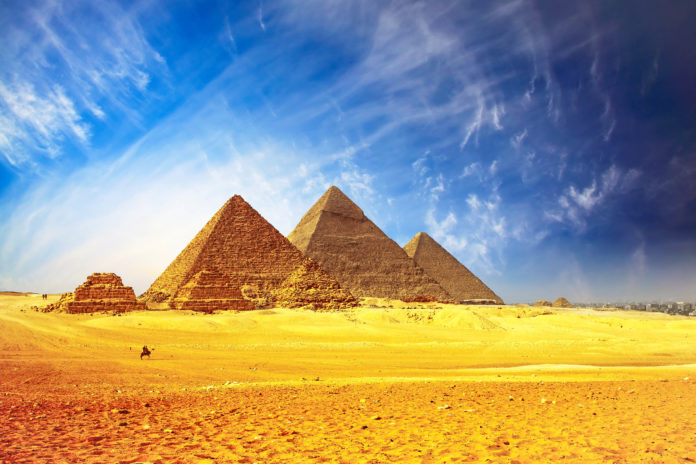Die weltbekannten Jahrtausende alten Pyramiden von Gizeh Cheops, Chephren und Mykerinos sind das einzige noch existierende der Sieben Weltwunder der Antike. Ihre Errichtung über 2500 Jahre vor Christus gibt den Wissenschaftlern bis heute Rätsel auf.
Die weltbekannten Pyramiden von Gizeh in Ägypten sind das einzige der Sieben Weltwunder der Antike, das heute noch erhalten ist und bestaunt werden kann. Seit 1979 stehen die drei Jahrtausende alten Hauptpyramiden von Cheops, Chephren und Mykerinos sowie die Große Sphinx auf der UNESCO-Liste des Weltkulturerbes. Auch wir haben die imposanten Grabstätten auf unsere Liste der Top 10 Sehenswürdigkeiten von Ägypten gesetzt.
Inhaltsverzeichnis
BILDER: Pyramiden von Gizeh
Fotogalerie: Pyramiden von Gizeh
Wo liegen die Pyramiden von Gizeh?

Die gigantischen Steinbauten befinden sich in der Wüste westlich des Nil direkt an der Scharia el-Ahram, der Pyramidenstraße. Sie liegen damit knapp 10km von der 2-Millionen-Stadt Gizeh und 15km von Kairo entfernt und sind bequem mit dem Auto oder einem Reisebus zu erreichen. Tagesausflüge und organisierte Rundreisen werden in der Umgebung an so ziemlich jeder Ecke angeboten.
Besichtigung der Pyramiden von Gizeh
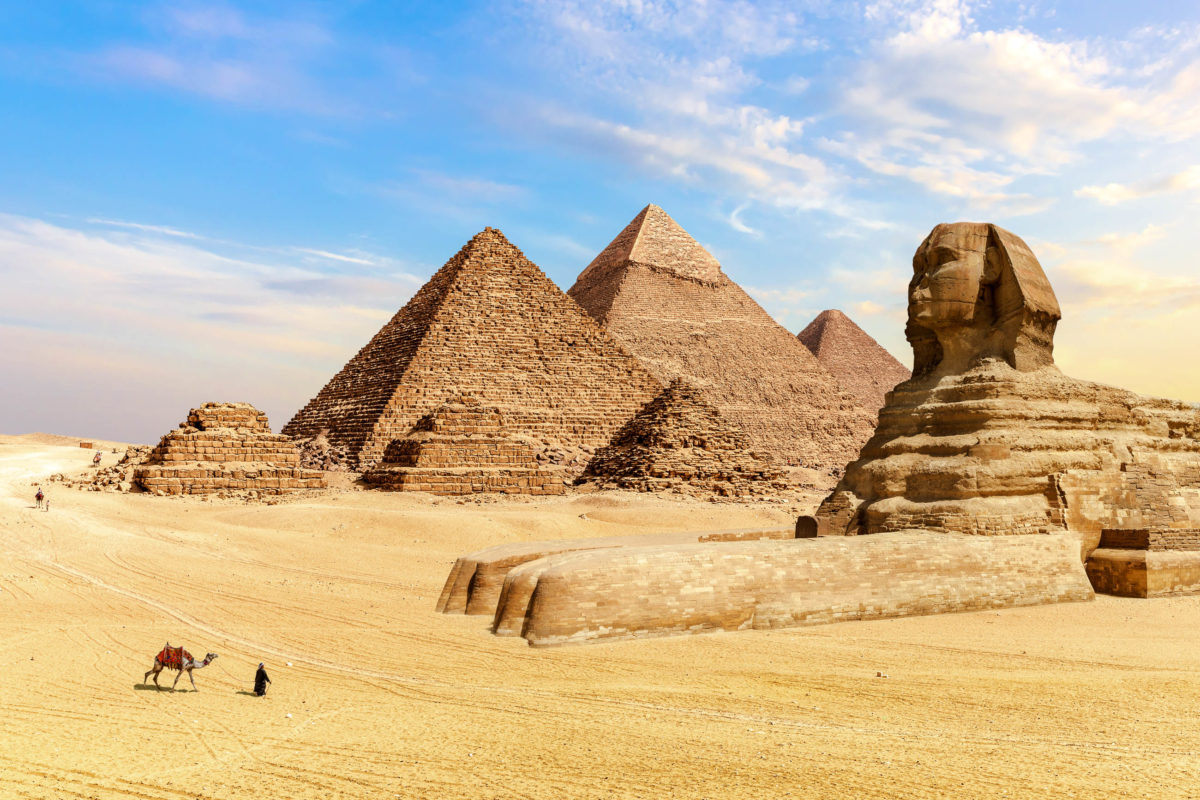
Die Pyramiden von Gizeh sind eine der meist besuchten Touristendestinationen der Welt – jährlich pilgern Millionen Menschen zu der eindrucksvollen Grabstätte der Pharaonen. Der freie Platz zwischen der Cheops- und Chefren-Pyramide dient nun als Parkplatz und das Gelände ist nicht nur von Touristen, sondern auch von Händlern, die schreiend ihre Waren anbieten, regelrecht überlaufen.
Die drei Hauptpyramiden können durch einen engen, stickigen Gang auch von innen besichtigt werden, der Eintritt in die Totengemächer der ehemaligen Könige kostet allerdings.
Cheops Pyramide

Die Cheops Pyramide ist die größte und wohl auch bekannteste der drei Hauptpyramiden. Zur Zeit ihrer Erbauung ragte sie fast 150 Meter über den Erdboden, mittlerweile sind es durch Wind und Wetter von 4 Jahrtausenden „nur“ noch knappe 140 Meter.
Bis ins Mittelalter war sie das höchste Gebäude der Welt, also über 3.000 Jahre. Der gigantische Bau ist 225 Meter breit, die größte Halle in ihrem Inneren, die „Große Galerie“ ist knappe 10 Meter hoch und 50 Meter lang.
Chephren Pyramide
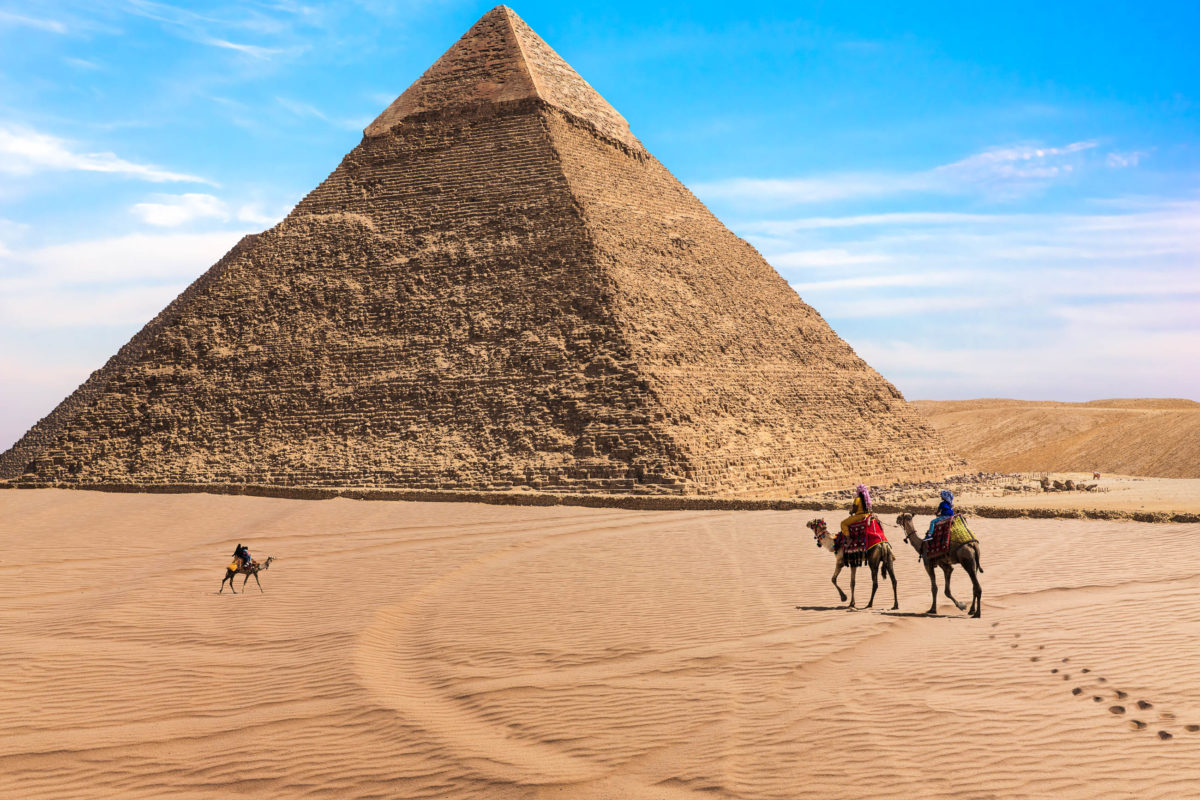
Die Chephren Pyramide ist nur 2 Meter kleiner als die Cheops-Pyramide und liegt noch dazu etwas höher, wodurch sie oft mit der Cheops-Pyramide verwechselt wird. Als Sohn des Cheops ließ Chephren seine Pyramide nur kurze Zeit nach der seines Vaters errichten.
Von der Cheops Pyramide führt ein Weg zur Sphinx von Gizeh und weiter zum Totentempel. Auch ein Museum steht daneben, in welchem man unter anderem eine restaurierte Sonnenbarke besichtigen kann, die wahrscheinlich zum Transport der Steine auf dem Nil benutzt wurde.
Mykerinos Pyramide
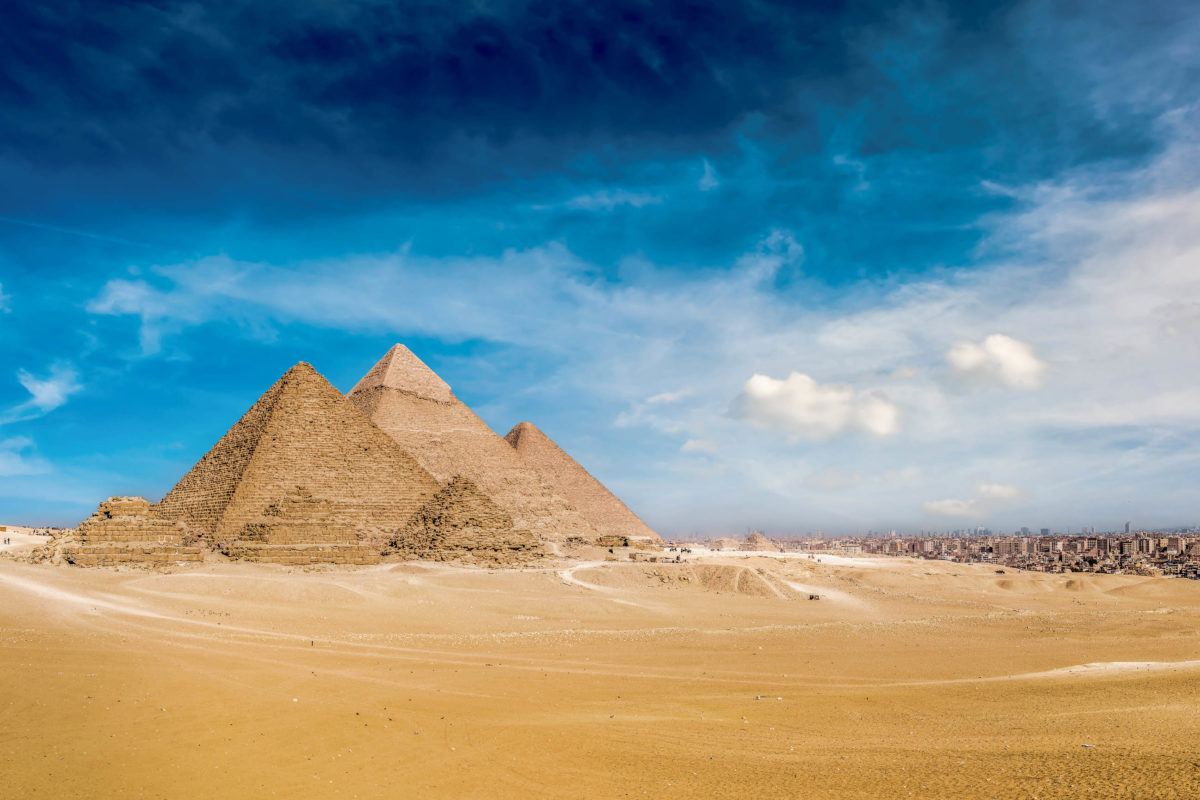
Die Mykerinos Pyramide erscheint mit ihren 62 Metern Höhe beinahe winzig. Auch Mykerinos gehörte zur Familie, er war der Sohn von Chephren. Warum dieser eine so bescheidene Grabstätte errichten ließ, ist bis heute unklar.
Astronomen vermuten, dass das Sternbild des Oriongürtels als Verbindung zwischen Himmel und Erde nachempfunden werden sollte, der auch aus zwei großen und einem kleinen Stern besteht. Auch die Seiten der Pyramiden sind exakt nach den Himmelsrichtungen ausgerichtet. Der etwas pragmatischere Erklärungsansatz ist Geld- bzw. Platzmangel.
Große Sphinx von Gizeh
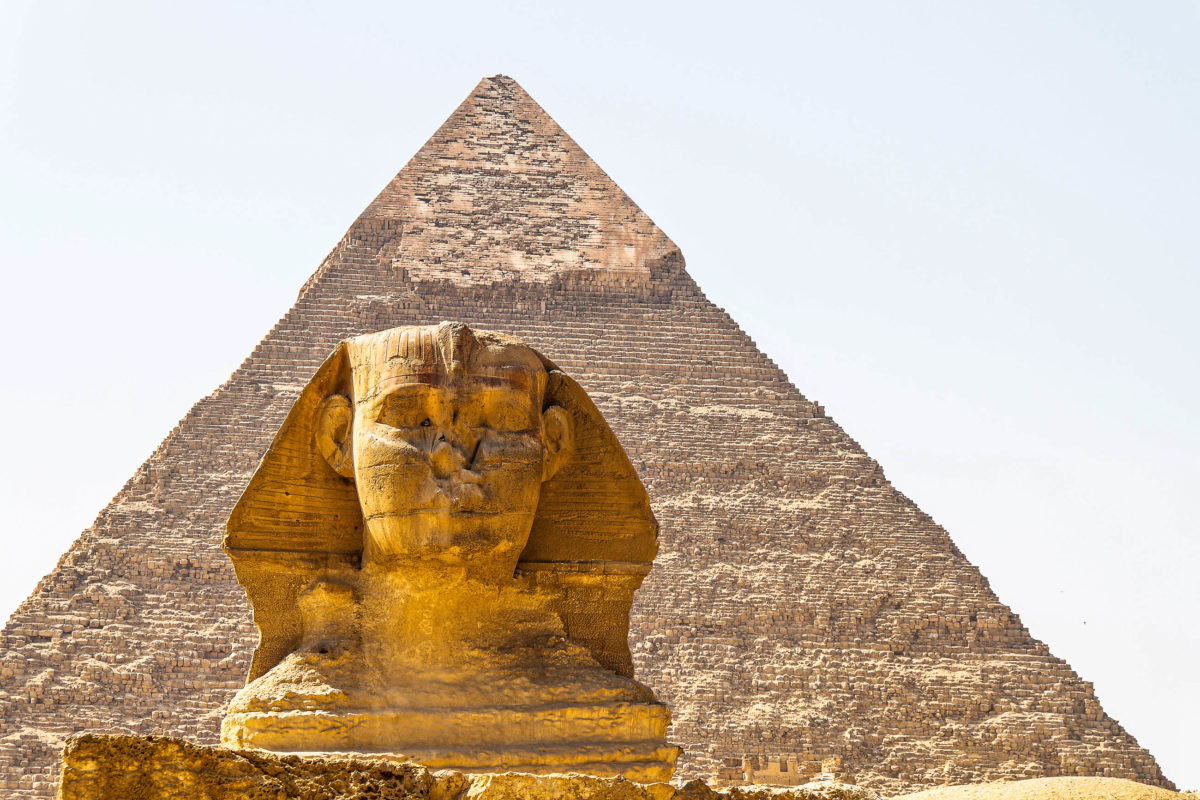
Die Große Sphinx von Gizeh stellt einen Löwen mit einem Menschenkopf dar und verdient ihren Namen zu Recht. Sie ist gigantische 20m hoch und über 70m lang und wurde zur selben Zeit wie die Pyramiden erbaut. Ihre imposante Erscheinung diente wahrscheinlich der Bewachung der Pyramiden von Gizeh.
Ihre Nase fehlt übrigens tatsächlich – über diesen Umstand gab es bereits die wildesten Theorien von Schießübungen von Napoleons Truppen bis hin zur mutmaßlichen Zerstörung durch Fanatiker. Das Thema hielt auch in mehreren Geschichten, wie dem Comic „Asterix und Kleopatra“ oder dem Disneyfilm „Aladdin“, Einzug.
Neben diesen monumentalen Bauten befinden sich noch kleinere Pyramiden, in denen die Königinnen der Pharaonen begraben wurden, sowie Dörfer der Arbeiter, Gräberfelder und Tempel.
Eine dieser kleinen Pyramiden wird auch oft als die „vierte Pyramide von Gizeh“ bezeichnet. Es handelt sich dabei um das Grabmal der Königin Chentkaus I, das zuerst für unvollendet gehalten wurde, da sie nicht einmal 20 Meter hoch war. Es hatte jedoch mit der angrenzenden Siedlung für die Priesterschaft und einem Schiffsgrab alle Aspekte eines Herrschergrabes.
Pyramiden im Scheinwerferlicht

Nach Einbruch der Dunkelheit erstrahlen die Pyramiden von Gizeh und die Große Sphinx jeden Abend in einer Licht- und Projektionsshow, mit Musik und Texten in verschiedenen Sprachen untermalt. Was für die einen kitschig anzusehen ist, unterstreicht für andere noch die mystische Aura dieser uralten Bauwerke.
Tipp: Da es in der Wüste richtig kalt werden kann, zur Show unbedingt mit langen Hosen und Jacken erscheinen! Aufgrund der freien Platzwahl empfiehlt es sich außerdem möglichst bald dort zu sein, um sich die besten Plätze zu sichern.
Die Mysterien des Pyramidenbaus
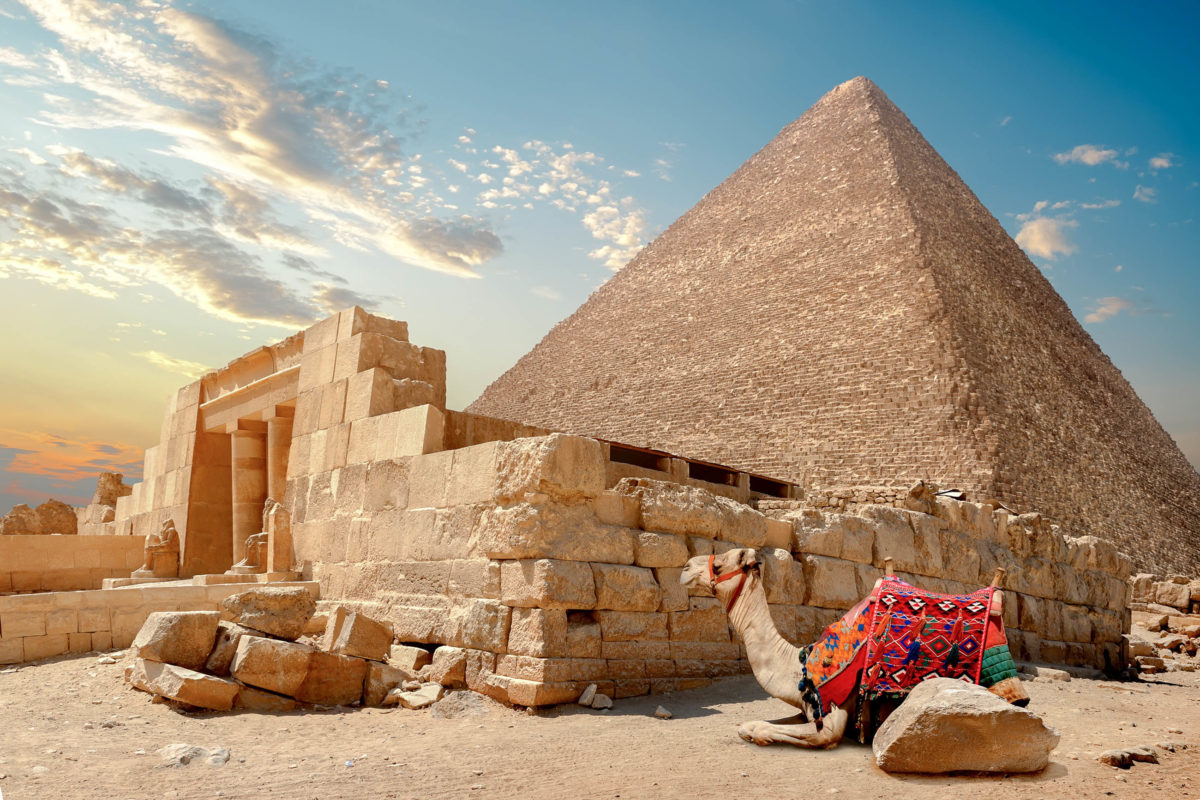
Die Pyramiden von Gizeh gaben den Forschern von alters her Rätsel auf. Ihre Entstehung in den Jahren 2600 bis 2500 vor Christus ist bis heute nicht restlos geklärt.
Die Pharaonen Cheops, Chephren und Mykerinos, in dessen Namen die drei gewaltigen Hauptpyramiden angeblich erbaut wurden, hatten nirgendwo niedergeschrieben, diese in Auftrag gegeben zu haben. Das ist für derartig monströse Bauwerke eher ungewöhnlich. Man fand auch keinerlei Grabbeigaben oder gar Mumien in den gigantischen Bauten, die Sarkophage waren geöffnet und leer.
Das nächste Mysterium: Wissenschaftler gehen heute davon aus, dass etwa 10.000 ägyptische Arbeiter an dem Bau beteiligt waren. Doch wie?
Von Rädern und Flaschenzügen konnte noch keine Rede sein und doch haben sie alleine für die Cheops-Pyramide 3 Millionen Kalksteinquader mit einem Gewicht von zweieinhalb Tonnen vom Steinbruch bis zur Baustelle geschleppt und anschließend aufeinander gestapelt. So wurde die Errichtung der Pyramiden bereits Geistern und Außerirdischen zugeschrieben, Beweise dazu fehlen selbstverständlich.
Rätselhafte Schächte, die aus der Königskammer führen, versperrte Durchgänge, Wände, hinter denen sich weitere Wände befinden und eine Unzahl an nicht entzifferbaren Hieroglyphen tragen ihren Teil zu den Rätseln um die Pyramiden bei. Diese zu entschlüsseln, wird auch mit den modernsten Hilfsmitteln noch einige Zeit in Anspruch nehmen. Aber das macht nichts – selbst die Wissenschaft muss nicht immer alles wissen, denn so bleibt den Pyramiden nach wie vor ein gewisser Zauber inne.

